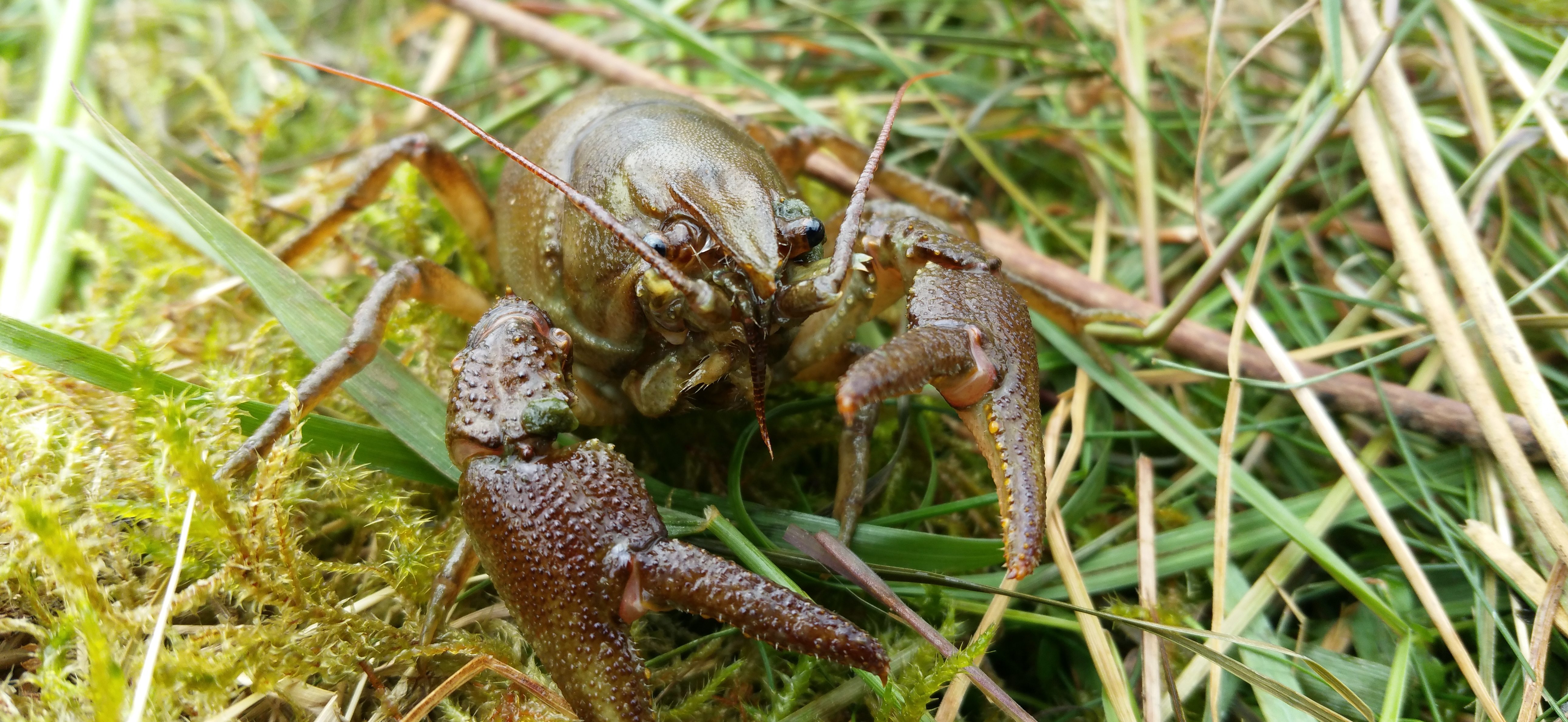Five Year Project Drives Success for Native White Crayfish Conservation
A five-year project has made considerable progress in the conservation of our native white-clawed crayfish. The project was delivered by Hampshire and Isle of Wight Wildlife Trust (HIWWT) through the Southern Chalkstreams Project, a partnership project funded by the Vitacress Conservation Trust.
Native white-clawed crayfish are under increasing threat from the introduced North American signal crayfish, and the disease ‘crayfish plague’ it carries.
The four key objectives of the project were to:
- Raise awareness of the threats to white-clawed crayfish
- Increase our knowledge of the ecology and distribution of crayfish species in Hampshire
- Facilitate and, where appropriate, lead on the delivery of targeted habitats works for white-clawed crayfish
- Develop and deliver strategic conservation plans for white-clawed crayfish and partners
Researchers, led by Dr Ben Rushbrook MCIEEM, a Senior Ecologist at HIWWT, undertook a number of steps including:
- Annual monitoring, conducted by HIWWT to protect and enhance existing populations of white-clawed crayfish, the most productive associated with the Candover Stream
- Setting up ‘Ark’ sites where the species can be protected from signal crayfish. An ark site for white-clawed crayfish is an isolated, self-contained site with running water, still water, or both, which can support a healthy, self-sustaining population of white-clawed crayfish with little need for ongoing management. Hampshire’s first ‘Ark’ site was set up in autumn 2016 at Sparsholt College.
- A captive-rearing and breeding programme, led by Bristol Zoological Society, so more crayfish can be released to bolster populations / colonise ark site
- Providing consultation and advice to partners and external organisations
Image credit: Peter Brett Associates
